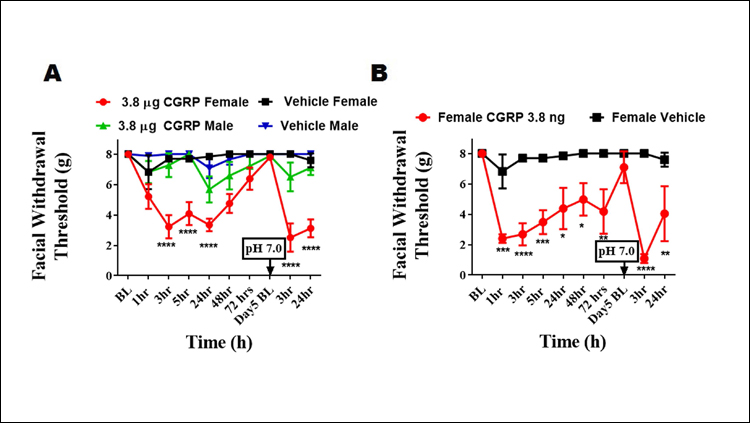Migraine Neurobiology Linked to Prevalence in Females

Low doses of a peptide known for decades to be involved in migraine trigger pain responses in female but not male rodents, according to a new research published in JNeurosci. This finding may help explain why migraine is more common in women than men.
Despite its well-established role in migraine, it is unclear where in the body calcitonin gene-related peptide (CGRP) contributes to the headache. Whether sex differences exist in the neurobiology of this female-biased disorder is also unknown because previous investigations of CGRP and migraine have typically only used male animals.
Gregory Dussor and colleagues at the University of Texas at Dallas and the UT Health Science Center addressed these gaps by studying rat and mouse migraine models that include animals of both sexes. The researchers found injecting low doses of CGRP into the dura mater - the protective outer layer between the skull and the brain - produced headache symptoms only in females. They observed a similar effect when CGRP was injected into the female animals' paw.
Read the manuscript in JNeurosci: Dural calcitonin gene-related peptide produces female-specific responses in rodent migraine models

















